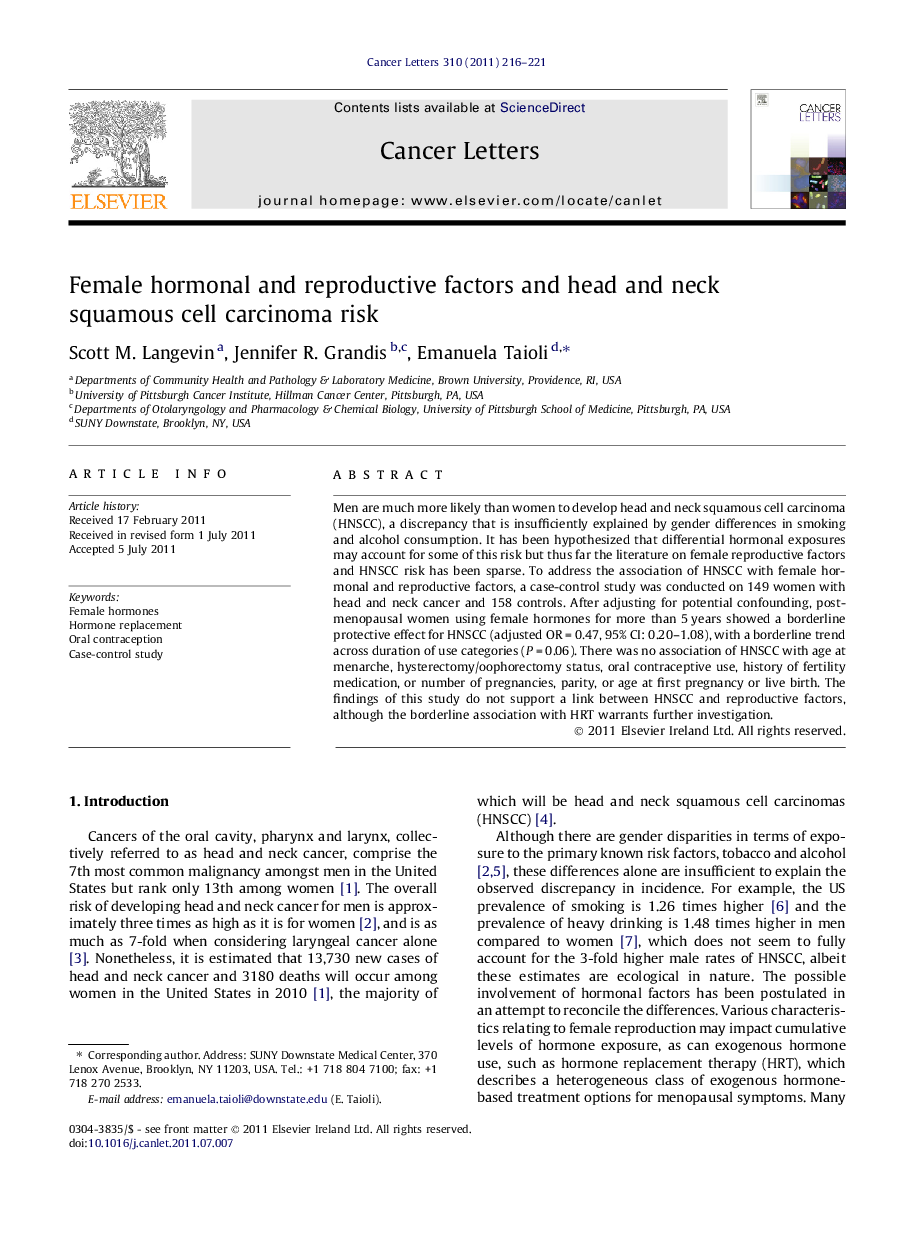| Article ID | Journal | Published Year | Pages | File Type |
|---|---|---|---|---|
| 2113607 | Cancer Letters | 2011 | 6 Pages |
Men are much more likely than women to develop head and neck squamous cell carcinoma (HNSCC), a discrepancy that is insufficiently explained by gender differences in smoking and alcohol consumption. It has been hypothesized that differential hormonal exposures may account for some of this risk but thus far the literature on female reproductive factors and HNSCC risk has been sparse. To address the association of HNSCC with female hormonal and reproductive factors, a case-control study was conducted on 149 women with head and neck cancer and 158 controls. After adjusting for potential confounding, postmenopausal women using female hormones for more than 5 years showed a borderline protective effect for HNSCC (adjusted OR = 0.47, 95% CI: 0.20–1.08), with a borderline trend across duration of use categories (P = 0.06). There was no association of HNSCC with age at menarche, hysterectomy/oophorectomy status, oral contraceptive use, history of fertility medication, or number of pregnancies, parity, or age at first pregnancy or live birth. The findings of this study do not support a link between HNSCC and reproductive factors, although the borderline association with HRT warrants further investigation.
► This is a case-control study of head and neck squamous cell carcinoma (HNSCC) in women. ► We examine the association of HNSCC with hormonal and reproductive factors. ► We find a borderline protective effect of postmenopausal hormone use for HNSCC. ► The association between hormone use and HNSCC warrants further investigation.
